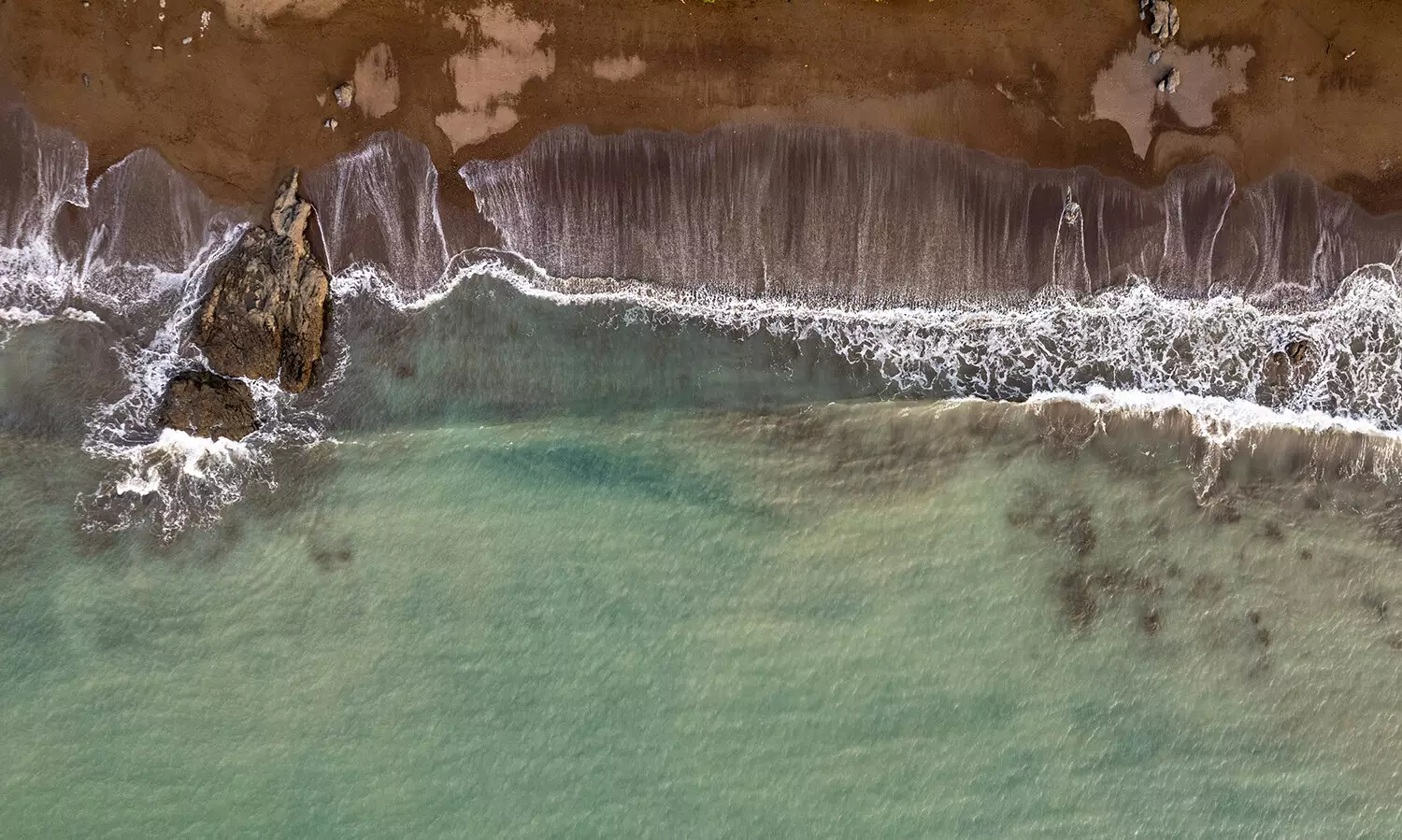Approximately 34 million years ago, the Earth experienced one of its most significant climatic transitions, known as the Eocene-Oligocene boundary. This period was characterized by a dramatic cooling event, which led to the formation of massive ice sheets in Antarctica and a substantial drop in global sea levels. Conventionally, scientists have expected this climatic upheaval to result in extensive erosion of continental landscapes and the deposition of vast amounts of sandy sediments into oceanic basins. However, recent findings from a comprehensive review conducted by the Stanford research team challenge these prevailing assumptions, revealing a perplexing absence of the expected sediment layers dating to this transitional period. Such a discovery has profound implications for our understanding of sedimentary processes and climate impacts in both historical and contemporary contexts.
Published in the esteemed journal Earth-Science Reviews, this study has unearthed significant discrepancies between established geological models and actual sediment records observed across the margins of all seven continents. According to Stephan Graham, a senior researcher at Stanford, these findings provoke a critical question: “Where did all the sediment go?” The study’s revelation of a global sedimentary gap has important ramifications for how scientists comprehend the mechanisms of sediment movement and the geological impact of climate change. With this knowledge, researchers hope to draw parallels between historic climatic shifts and the rapid changes currently observed in today’s environment.
During the Eocene epoch, which lasted from approximately 56 to 34 million years ago, the planet enjoyed the warmest temperatures it had seen since the age of dinosaurs. As the global climate quickly transitioned to a cooler, icehouse state during the late Eocene, researchers anticipated a concurrent increase in sediment deposition due to enhanced terrestrial erosion driven by changing weather patterns. However, as the Stanford team, led by Dr. Zack Burton, delved deeper into the sediment records, they encountered unexpected outcomes: rather than the anticipated abundance of sandy deposits, the data revealed pervasive erosional unconformities, or gaps in the geological record.
The researchers poring over literature and geological studies spanning over a century discovered a disconcerting trend. Our understanding of this climatic event has been limited, and the assertive evidence of sediment erosion raises questions about the resilience and responsiveness of Earth’s geological systems to rapid climate fluctuations. This newfound perspective emphasizes the interconnectedness of climate dynamics and sedimentary processes on a global scale.
The researchers employed a rigorous literature review methodology, gathering data from a comprehensive array of scientific sources, including offshore drilling studies, seismic data interpretations, and global sediment characteristics. Their meticulous approach, while not novel in itself, highlighted the invaluable insights afforded by leveraging modern databases to resurface ancient data. Graham noted that the methodical re-examination of historical geological records could lay the groundwork for fresh investigations into similar climatic phenomena in the Earth’s history.
As Burton recounted, the research team initially sought to understand sediment dynamics during the warmer early Eocene. Upon transitioning their investigation to include the cooler Eocene-Oligocene phase, their observations took a surprising turn. The anticipated patterns of deposition were absent, replaced instead by extensive signs of sedimentary erosion and dramatic geological shifts.
The absence of sandy sediment deposits raises several potential explanations. One theory suggests that powerful ocean bottom currents, influenced by the cooling climate, may have disrupted the sedimentation process along continental margins. These currents could have eroded sediment off the ocean floor, consequently transporting it deeper into oceanic regions. Furthermore, changes in the continental shelves due to significant sea-level drops may have facilitated sediment bypass to the ocean’s abyssal plains instead of accumulating in closer sedimentary basins.
Additionally, more localized processes, such as pronounced glacial erosion near Antarctica, likely contributed to the observed sedimentary gaps. The collective effect of these mechanisms resulted in a distinct pattern of erosion echoing across oceanic basins worldwide. This uniformity illustrates the reach and intensity of environmental changes during this pivotal climatic transition, underlining the notion of global controls exerted by extensive climatic change.
While the magnitude of recent climate changes caused by human activity is dwarfed in comparison to the Eocene-Oligocene transition, the acceleration of these processes signals a cause for concern. The Stanford researchers emphasize that understanding the geological impacts of historic climate shifts helps inform contemporary responses. They stress that knowledge of past radical changes on Earth’s surface can contextualize the challenging dynamics of our current climate crisis.
The revelations from the Stanford study illuminate critical geological inquiries concerning climate transition events. By comprehensively reexamining prior research, scientists are not only piecing together the geological puzzle of the Eocene-Oligocene boundary but also fostering a deeper understanding of the interplay between climate change and geological responses. As we confront today’s environmental changes, such insights are more valuable than ever.


Leave a Reply